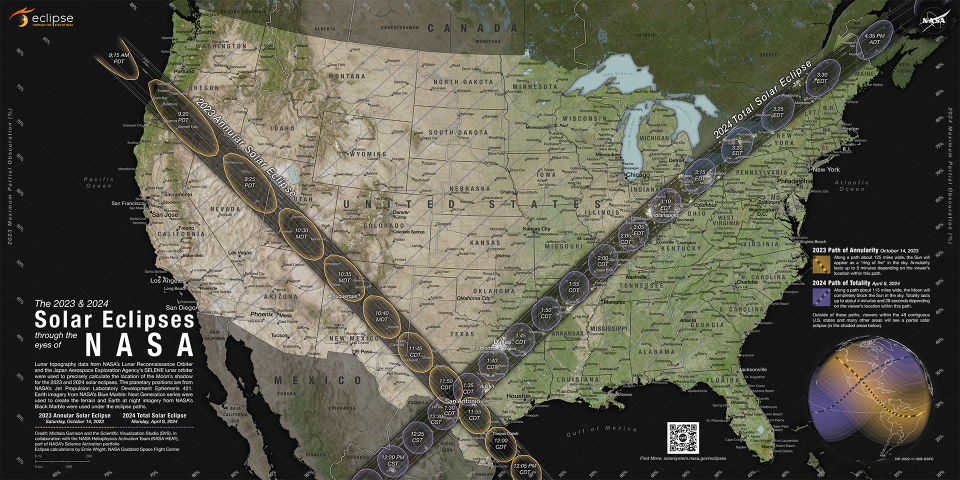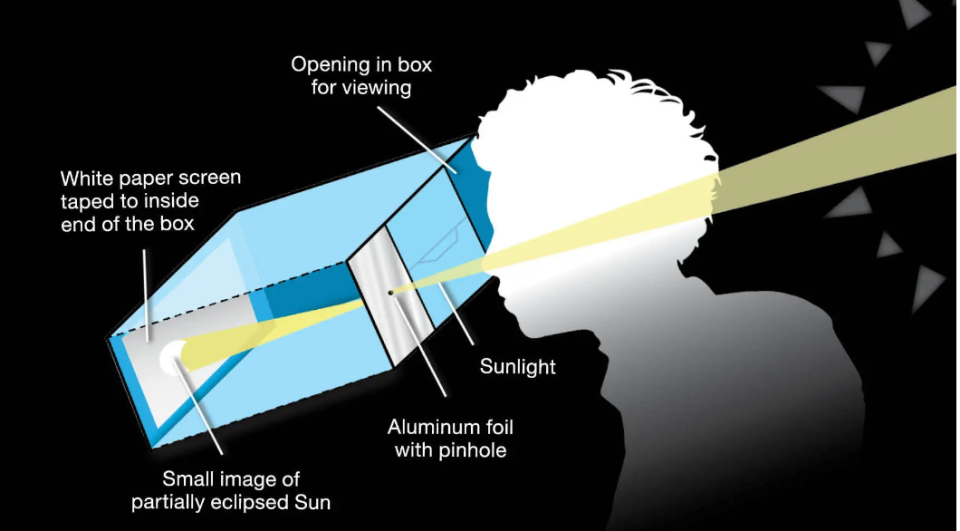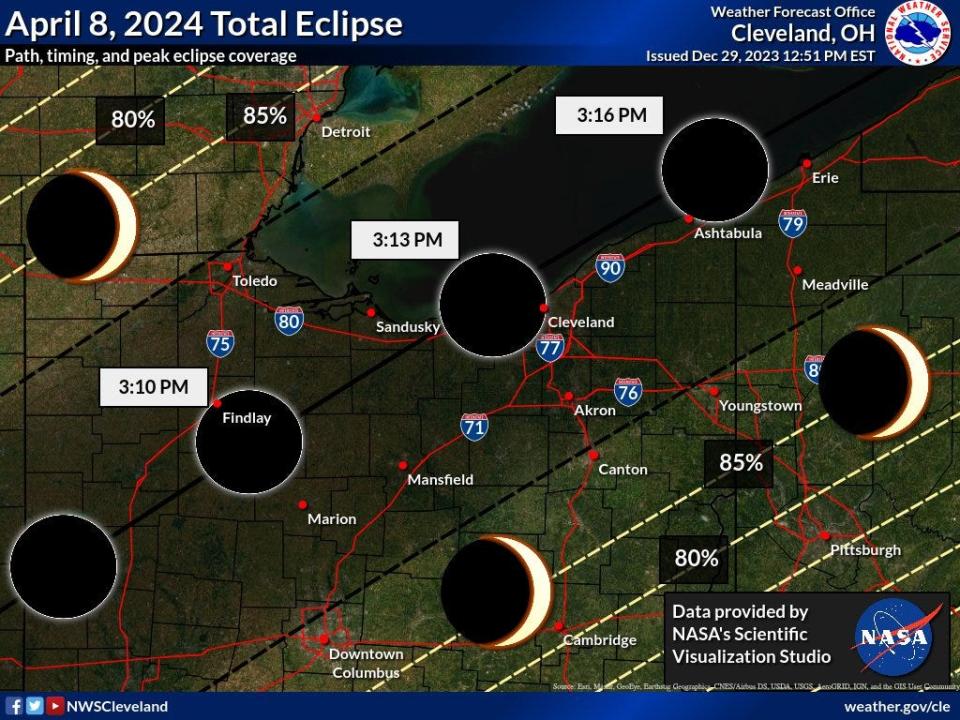2024 total solar eclipse is April 8: Southeast Michigan will be best viewing spot in state
Michigan residents will have a rare opportunity to view a total solar eclipse that's expected to cast a sizeable chunk of North America in darkness on April 8.
While Michigan doesn't fall in the eclipse's line of totality, the head of astronomy at the Cranbrook Institute of Science, Michael Narlock, said the state will get about 98% sun coverage. One small sliver of Monroe County falls on the edge of the path of totality.
The eclipse will begin at 1:58 p.m. and reach maximum totality, or coverage, around 3:14 p.m. in Detroit and southeast Michigan. It will conclude with a final partial eclipse at 4:27 p.m.
This year’s total eclipse will last longer than the one viewed by more than 20 million people in August 2017, and according to NASA won’t happen again for another 20 years. Fifteen total solar eclipses have been recorded in the U.S. in the last 150 years, with the next one expected in August 2044.
Here's what you need to know and how to prepare for the 2024 total eclipse.

What’s a solar eclipse?
Solar eclipses occur when the moon passes directly between the sun and Earth’s orbits, creating an eclipse of Earth’s view of the sun.
The path of totality is the predicted path of the eclipse from Mexico, through the U.S. across Texas and North America to the coast of Newfoundland, Canada. The expected duration of totality is around 4 hours, starting around 11:07 a.m. PDT and ending around 5:16 NDT.
States in the path of totality for the 2024 solar eclipse include Texas, Oklahoma, Arkansas, Missouri, Illinois, Kentucky, Indiana, Ohio, Pennsylvania, New York, Vermont, New Hampshire and Maine.
More: Delta adds flight to Detroit that'll let you view the 2024 solar eclipse from the sky

How to safely watch the 2024 eclipse
Looking directly into a total eclipse can be damaging to the human eye, Narlock said.
"Ultraviolet light can damage your eyes," Narlock said. "You can find glasses that purport to be safe, and while they may cut down the intensity of visible light from the sun, rarely do they cut UV light."
Narlock said the only safe "eclipse glasses" meet the ISO 12312-2 safety standard. This means attempting to DIY a pair could prove harmful and ineffective.
"What you could do at home (instead), and relatively easy, is make a pinhole camera or projector," Narlock said. "Using such a technique you can view the Sun indirectly and safely."
The American Astronomical Society has a list of approved solar-eclipse glasses suppliers here.

Where can I view the eclipse from Michigan?
Michigan doesn't fall in the line of totality, but the southeast corner of the state, in Monroe County, is along the edge of the path. This means the area will likely dim and temperatures drop a few degrees as the moon's shadow covers the sun.
Click the cities on the map to see the percentage of totality and the start time in each community.
USA TODAY contributed.
This article originally appeared on Detroit Free Press: Total solar eclipse 2024 is April 8: Path, time, glasses, more

